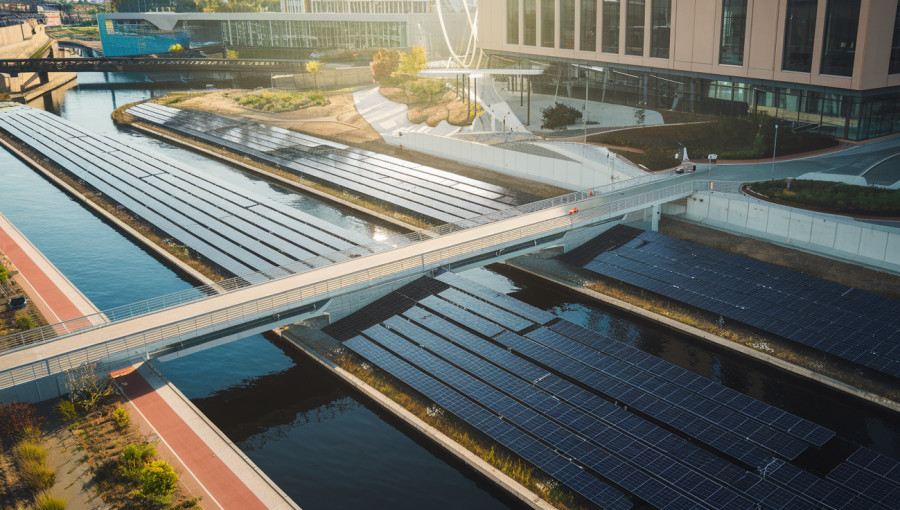A groundbreaking solar project called Project Nexus has been completed in California’s Central Valley, marking the state’s first solar-covered canal. This 1.6-megawatt installation, which cost $20 million and received state funding, aims to generate clean electricity while addressing water loss due to evaporation in the agricultural region. As the second canal-based solar array in the U.S., its benefits include increased energy efficiency and the potential to reduce water evaporation and algae growth. Researchers will monitor its performance as it contributes to a larger push for solar canals across California.
California’s first solar-covered canal is now fully operational, with benefits extending beyond just electricity generation. Project Nexus, completed last month, spans sections of the Turlock Irrigation District’s canals. This innovative approach allows solar panels to cover waterways, providing both clean energy and reducing water evaporation, a critical issue in drought-prone areas. The installation, part of a broader initiative to develop solar canals, includes two phases, with varying widths of the solar array. Early research suggests that the unique arrangement may enhance solar efficiency while simultaneously aiding in water conservation.
This project represents only the second operating solar-canal array in the U.S., following one initiated in Arizona in 2024. There are plans for additional installations in Arizona, showcasing rising interest in this dual-purpose technology. The solar structures not only cater to the energy needs of local canal operations but are also seen as a potential model for sustainable energy generation without interfering with existing land uses.
Despite the advantages, implementing solar canals comes with unique challenges. The costs associated with elevating solar panels over waterways are higher than traditional ground-mounted systems, requiring meticulous engineering to prevent ecological disruption. Nevertheless, proponents argue that integrating solar technology into existing infrastructure can expedite clean energy deployment, especially in rural areas facing opposition to larger solar farms.
As the Gila River Indian Community leverages similar technology, California’s project serves as a beacon for future developments across the country. The growing expertise in constructing canal-based solar installations offers a pathway for irrigation districts seeking affordable energy solutions, showcasing the potential of elevating renewable energy endeavors in environmentally sensitive areas. With further expansions planned, the momentum for solar canals seems likely to continue growing, regardless of potential policy shifts at the federal level.

